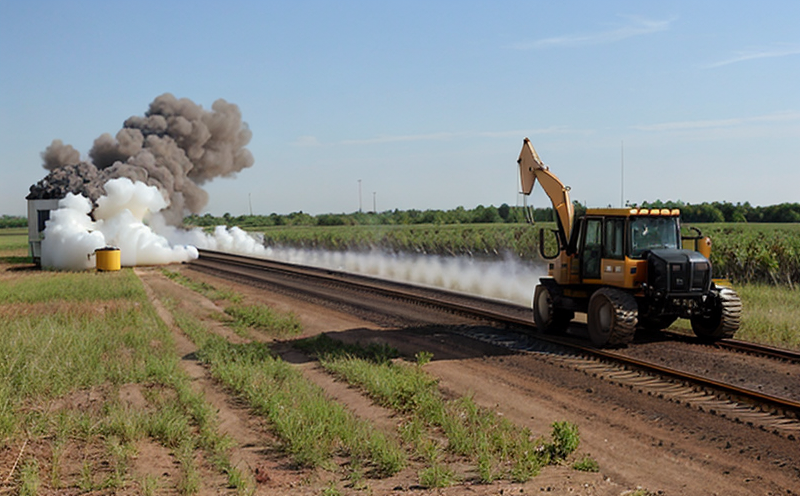DIN 68861 Surface Resistance Testing of Furniture under Temperature and Humidity
The DIN 68861 standard is a crucial component in the quality control process for furniture manufacturers, ensuring that surfaces are resistant to moisture penetration. This test simulates real-world environmental conditions where furniture may be exposed to varying levels of humidity and temperature over time. Compliance with this standard ensures product durability and enhances consumer satisfaction by preventing potential damages such as warping, cracking, or peeling.
During the testing process, samples are subjected to controlled temperature and humidity cycles that replicate typical indoor environments. The goal is to assess how well the surface of a piece of furniture can withstand these conditions without compromising its structural integrity or appearance. This type of environmental resistance testing helps manufacturers identify any weaknesses in their products early on, allowing for necessary adjustments before mass production begins.
The DIN 68861 test protocol involves several key steps. Specimens are selected based on the intended use and material composition of the furniture piece being tested. Once chosen, specimens undergo thorough cleaning to ensure accurate results. They are then placed in a climate-controlled chamber where they will be exposed to specified temperature ranges (e.g., 5°C to 40°C) and relative humidity levels (e.g., 10% to 90%). The duration of exposure varies depending on the specific requirements set forth by DIN 68861; however, it typically lasts between three days and one week.
After completing the prescribed cycle, inspectors carefully examine each specimen for signs of deterioration or damage caused by exposure. If any issues are found, further investigation into possible causes is conducted. For instance, if water marks appear on the surface after testing, this could indicate poor finish quality or insufficient protection against moisture ingress.
It's important to note that proper preparation plays a significant role in achieving reliable test results. Proper sample preparation ensures consistency across different tests and comparisons between various materials or designs. Common practices include cleaning the specimen thoroughly using appropriate solvents before placing it into the chamber, ensuring even distribution of heat throughout the entire piece during testing.
Instrumentation used for DIN 68861 surface resistance testing includes temperature and humidity controllers capable of maintaining precise conditions within specified tolerances. Additionally, non-destructive evaluation techniques such as ultrasonic flaw detection or infrared imaging may be employed to assess any internal defects that could affect the overall performance of the furniture.
Reporting following completion of DIN 68861 testing typically includes detailed descriptions of observed phenomena during exposure periods along with quantitative data related to changes in physical properties like thickness variations, color shifts, or adhesion strength between layers. Recommendations for improvements based on findings are also provided so that manufacturers can implement corrective actions if needed.
In summary, DIN 68861 surface resistance testing of furniture under temperature and humidity conditions provides valuable insights into a product's ability to withstand environmental stresses effectively. By adhering to this standard during development stages, companies can enhance their reputation among customers while minimizing costly recalls later down the line due to premature failures.
Applied Standards
| Standard | Description |
|---|---|
| DIN 68861 | This standard specifies the requirements for determining the resistance of surfaces to water penetration under specified temperature and humidity conditions. It applies particularly to wood-based panels, veneers, and similar materials used in furniture manufacturing. |
Eurolab Advantages
At Eurolab, we bring decades of experience in conducting rigorous environmental resistance tests compliant with DIN 68861. Our state-of-the-art facilities offer controlled environments capable of replicating a wide range of climatic conditions found across different regions worldwide.
- Accurate control over temperature and humidity levels
- High precision measurement tools for monitoring changes in specimens
- Comprehensive analysis capabilities to identify potential weaknesses early on
- Experienced technicians who understand the nuances of DIN 68861 testing procedures
- Access to advanced instrumentation including climate chambers, humidity controllers, and non-destructive evaluation devices
- Expertise in interpreting results and providing actionable recommendations for improvement
- Comprehensive documentation services ensuring compliance with relevant regulations
We pride ourselves on delivering consistent, reliable test outcomes that help our clients make informed decisions regarding product design improvements. Our commitment to accuracy and quality ensures that all testing meets or exceeds the highest industry standards.
International Acceptance and Recognition
- DIN 68861 is widely accepted in Europe as a benchmark for evaluating the water resistance of wooden surfaces used in furniture construction.
- It has been adopted by numerous regulatory bodies including EN 335, which specifies requirements for wood-based panels intended for use in exterior applications where exposure to moisture is expected.
- The standard enjoys global recognition among manufacturers who export their products into EU markets or those seeking certification under various international accreditations.
- Many leading brands incorporate DIN 68861 compliance as part of their quality assurance programs, ensuring that every product they produce meets stringent performance criteria.
The widespread adoption of this standard underscores its importance in the furniture industry. By adhering to these guidelines, manufacturers can ensure not only local market acceptance but also broader international distribution opportunities.





